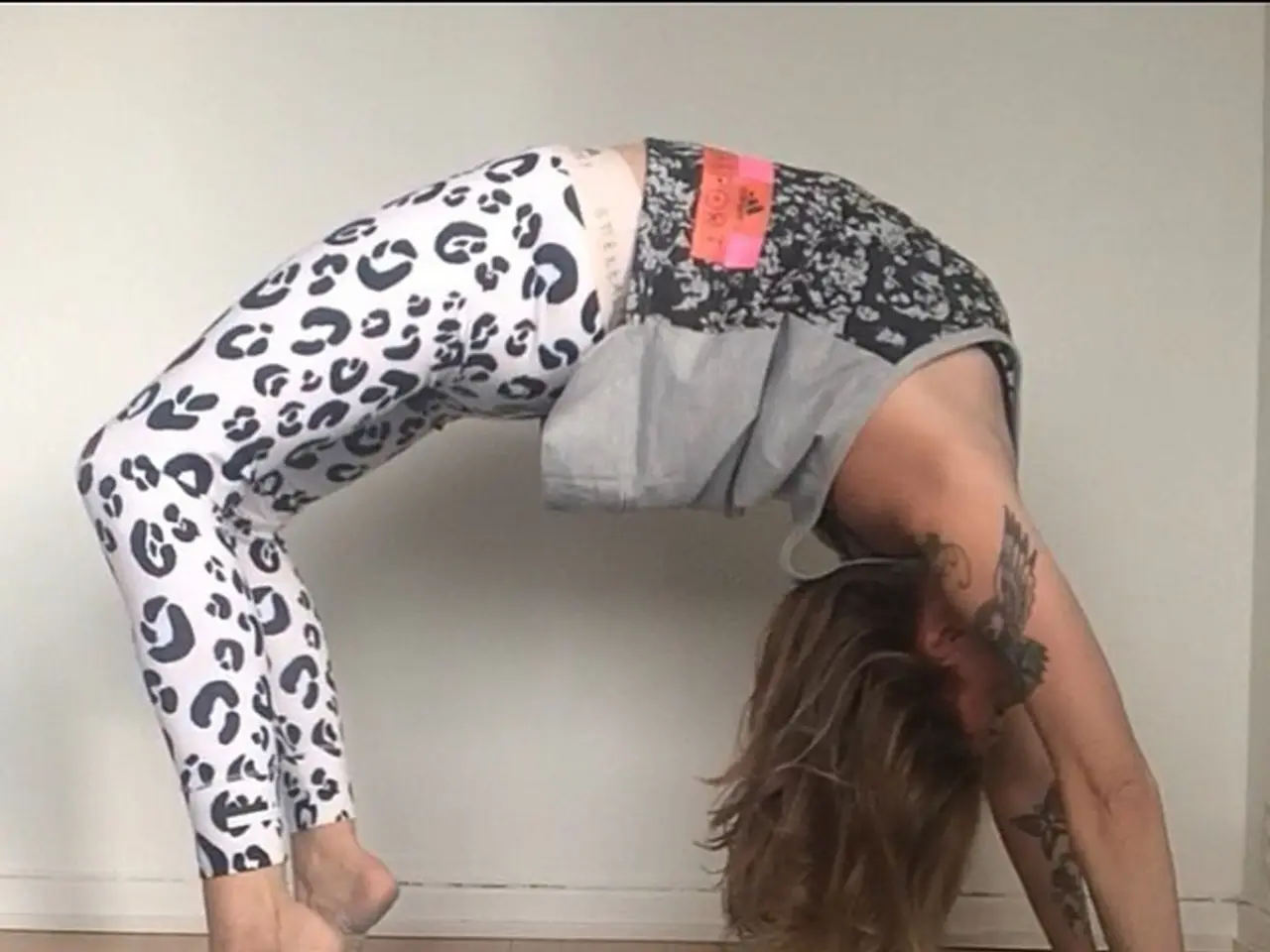Yoga in breast cancer treatment: Benefits, postures, potential risks, and additional information
Yoga, with its focus on gentle stretching, strengthening, and restorative poses, can be a beneficial complementary treatment for breast cancer patients and survivors. However, it is essential to approach yoga with caution and always consult a doctor or physical therapist before starting any physical activity.
Recommended Yoga Poses
A yoga instructor experienced in working with breast cancer patients and survivors can help determine which poses and types of yoga are safe. Recommended yoga asanas for breast cancer patients and survivors focus on improving breast health, aiding lymphatic drainage, reducing stress, and promoting gentle strength and flexibility. Some key yoga poses include:
- Balasana (Child's Pose): This gentle pose helps stretch the hips, thighs, and back muscles while relaxing the chest muscles.
- Ardha Matsyendrasana (Half Spinal Twist): This pose improves spine alignment, detoxifies the lymphatic system, and alleviates stress and anxiety.
- Virabhadrasana II (Warrior II Pose): This pose strengthens core muscles, increases stamina, improves circulation, supports lymphatic drainage, and enhances mental health.
- Viparita Karani (Legs-Up-The-Wall Pose): This restorative pose increases blood circulation and promotes lymphatic drainage, benefiting breast health.
- Gomukhasana (Cow Face Pose) and Bhujangasana (Cobra Pose): These poses also support breast health through improved muscle flexibility and circulation.
Precautions for Safe Practice
For breast cancer survivors undergoing or following surgery, gentle yoga focusing on targeted movements, breathing techniques, and posture improvements is advised to improve mobility, reduce pain, and support recovery without compromising surgical areas.
To ensure safe practice, it is crucial to:
- Always consult your oncologist or physical therapist before starting yoga post-diagnosis or post-surgery.
- Avoid poses that put excessive strain on healing surgical sites, especially soon after surgery.
- Focus on gentle, restorative, and mindful practices like Yin Yoga, which involves holding poses comfortably and emphasizes breathing and relaxation to reduce tension and enhance well-being.
- Be mindful of any lymphedema risk; poses should avoid constriction around arms and chest and promote lymphatic drainage.
- Modify poses to accommodate limited range of motion, pain, or fatigue.
- Progress gradually and listen to your body, stopping if you experience pain or discomfort.
Potential Risks and Precautions
People with bone metastasis may be at risk of fracture during yoga. If you have bone metastasis, it is essential to consult a healthcare professional on whether yoga is a safe activity for you.
Lymphedema may occur as a risk for people who have had lymph nodes removed during breast cancer surgery. If you experience lymphedema, consult with your doctor or physical therapist about safe and beneficial yoga poses.
Certain yoga poses could aggravate arm and shoulder problems in people who have had surgery for breast cancer, such as a mastectomy. An experienced yoga instructor can modify poses to accommodate a person's needs.
The Benefits of Yoga
Research indicates that yoga can help people with breast cancer feel less stressed, enjoy a better quality of life, and experience reduced fatigue. Low-intensity forms of yoga, such as gentle Hatha and restorative yoga, are safe and effective for treating symptoms like fatigue, sleep disruption, cognitive impairment, and musculoskeletal symptoms in people with cancer or survivors.
For example, Uttanasana (Standing Forward Bend) stretches the calves, hamstrings, and hips, relieving tension in the neck, spine, and back muscles. To perform Uttanasana:
- Begin by standing upright with feet hip-distance apart.
- Exhale and slowly hinge forward at the hips.
- Bend the knees as much as necessary.
- Reach the hands down toward the floor, placing the palms or fingertips on the floor or blocks.
- Release the head and neck toward the ground.
- Breathe and hold for 4-8 breaths.
- To release the pose, bend the knees more while keeping the back long and inhale as you return to standing.
In addition to Uttanasana, poses like Viparita Karani (Legs-Up-The-Wall Pose) and Savasana (Corpse Pose) can help calm the mind and relieve feelings of stress.
In conclusion, a combination of gentle stretching, strengthening, and restorative yoga poses that promote lymphatic drainage, improve circulation, and reduce stress are recommended for breast cancer patients and survivors. Always seek guidance from a healthcare professional to ensure your yoga practice is safe and tailored to your individual needs.
- Consulting a yoga instructor who specializes in working with breast cancer patients and survivors can help determine safe yoga poses for breast health, lymphatic drainage, stress reduction, and gentle strength and flexibility improvement.
- Balasana (Child's Pose) is a recommended yoga asana that helps stretch hips, thighs, back muscles, and relaxes the chest muscles.
- Ardha Matsyendrasana (Half Spinal Twist) improves spine alignment, detoxifies the lymphatic system, and alleviates stress and anxiety.
- Virabhadrasana II (Warrior II Pose) strengthens core muscles, increases stamina, improves circulation, supports lymphatic drainage, and enhances mental health.
- People with breast cancer undergoing treatment or recovery should approach yoga cautiously, consulting a doctor or physical therapist, and modifying poses according to individual needs for a safe practice that supports mobility, reduces pain, and enhances well-being.
- Uttanasana (Standing Forward Bend) stretches calves, hamstrings, and hips, relieving tension in the neck, spine, and back muscles.
- To ensure safety in yoga practice for breast cancer patients, it is essential to avoid poses that put excessive strain on surgical sites, focus on gentle, restorative, and mindful practices, be mindful of any lymphedema risk, and modify poses to accommodate limited range of motion, pain, or fatigue.
- Research suggests that yoga can help breast cancer patients and survivors feel less stressed, enjoy a better quality of life, and experience reduced fatigue by treating symptoms like fatigue, sleep disruption, cognitive impairment, and musculoskeletal symptoms.
- After a breast cancer diagnosis or surgery, it is crucial to always consult an oncologist or physical therapist before starting any yoga practice.




